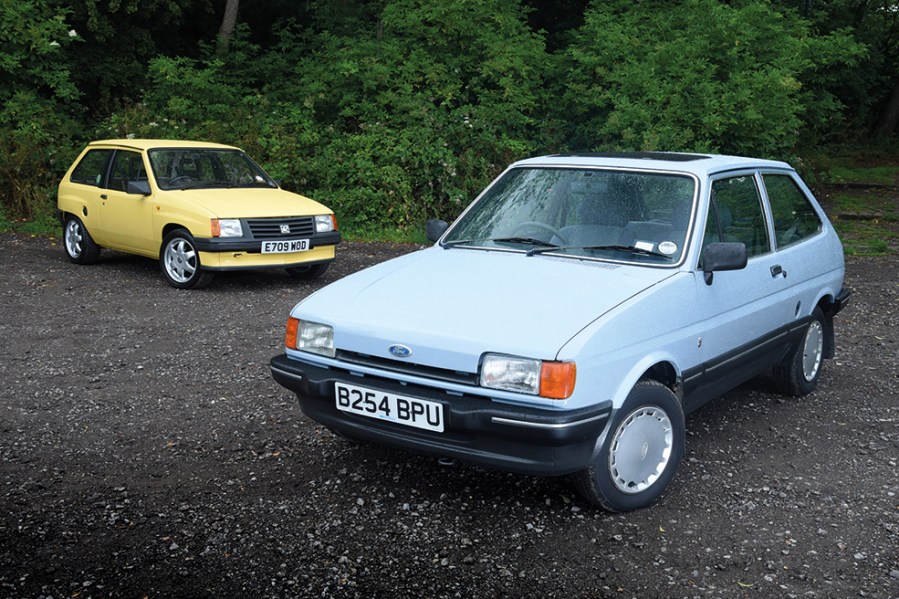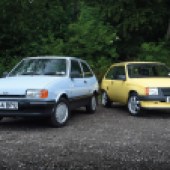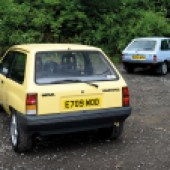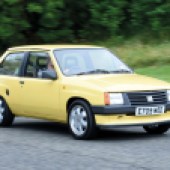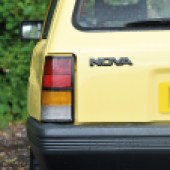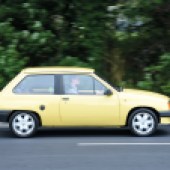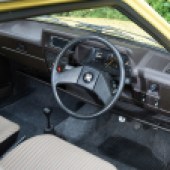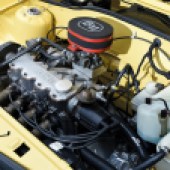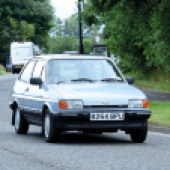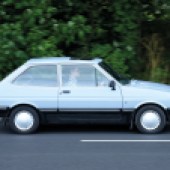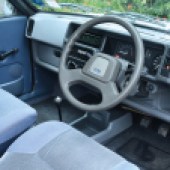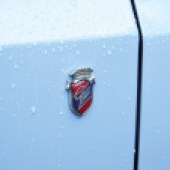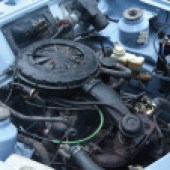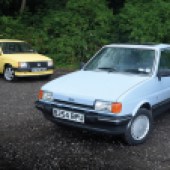These two supermini icons were hugely popular in the 1980s. We get behind the wheel to find out which is the better classic today – Vauxhall Nova or Ford Fiesta
Words and images: Paul Walton
For those like me who grew up in the ’80s, then these two cars will be as familiar as Noel Edmonds, a Rubik’s cube or taping the charts off the radio on a Sunday night. By being small yet capacious, economical yet comfortable, the Vauxhall Nova and second generation of Ford Fiesta were exactly what mothers on the school run, local police officers or driving schools needed at the time. As a result, they sold in huge numbers and became part of British street furniture. If you didn’t have one, I bet you know someone who did; in my case it was a red Vauxhall that was owned by my older sister.
Both arriving in the UK during 1983 and coming from two of the world’s largest car manufacturers, the Fiesta and Nova were bigger rivals than Margaret Thatcher and Neil Kinnock, the USA and the USSR and even Saturday Superstore and No. 73. With similar sales figures throughout the decade, there was no outright winner back then, but how about now?
Ford was the first of the two brands to react to the growing supermini market, introducing the first generation of Fiesta elsewhere in Europe in 1976 and to the UK market in January 1977. Dubbed Project Bobcat, work had started on the car five years earlier, in 1972, before being approved for production in late 1973. Personally championed by Henry Ford II, rising fuel costs had made a small and economical hatchback a priority, especially since the Fiat 127, Renault 5, VW Polo and Honda Civic were already on sale.
Built at Ford’s new factory located outside Valencia, the car’s Spanish heritage contributed to the name, with Henry Ford II vetoing the marketing team’s preferred Bravo moniker. The name Fiesta was owned by General Motors at the time having been previously used as an Oldsmobile trim level in the States but was freely given to Ford for its new small car.
Although late to the supermini party, its angular yet handsome lines, economical engines, practical interior together with the surefootedness of front-wheel drive (Ford’s first globally successful car to feature it) saw the Fiesta become an instant hit. It was the UK’s ninth best-selling car in its first year and by 1981, a year after a million had been produced, it was up to third.
But following the introduction of new rivals including the Austin Metro in 1980, the second generation of Polo in 1981, the first Nissan Micra in 1982 plus the threat of GM’s own forthcoming small car, Ford launched a mildly facelifted Fiesta in August 1983 to keep itself in the game. Although the basic shape and proportions remained the same, the front and rear were smoothed for improved aerodynamics, dropping the drag coefficient from 0.42 to 0.40.
To make room for the 1.3- and 1.6-litre CVH engines, plus the five-speed transmission that was standard on the larger engined models and an option on the 1.1, the front chassis structure and the front track were widened. The steering was a modified version of the Escort’s while the front discs were also sourced from the larger hatchback. Meanwhile, the interior was updated with a new dashboard that was influenced by the recently introduced Sierra.
Good looking, good to drive and with a spacious interior, the Fiesta Mk 2 was as successful as its predecessor and well-liked by customers and the press. “Getting into the Fiesta gives one a big car feel,” said Autocar magazine in October 1983. “Out on the open road, its handling is impressive.”
One of the reasons why the Fiesta was so popular was the huge range of trim levels that ranged from the affordable L to the plush Ghia, which offered some of the luxury found in a much larger car but in miniature.
“There was a time why buying a small car meant sacrificing a great deal in terms of performance and comfort in pursuit of good fuel economy,” continued Autocar. “The very high trim and equipment level of the Fiesta Ghia proves that a supermini can be comfortable, economical and relatively quick.”
It was pricey though; at £5100 in 1983 the 1.1 Ghia was almost £200 more than the Austin Metro 1.3 HLE and a whopping £800 over the nearest specified Nova, the 1.2 L. Yet the excellent fuel economy of the 1.1-litre petrol engine more than made up for the high cost; when Autocar tested the car, it returned an average 37.2mpg which was good for the day and similar to what the Nova 1.2 had achieved at the hands of the same testers a few months earlier.
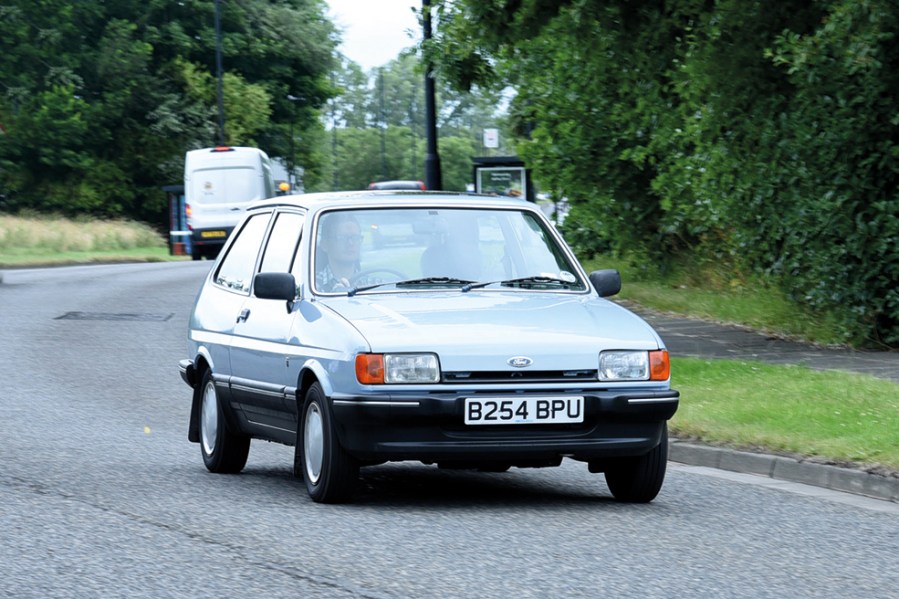
It’s a Ghia 1.1-litre we have a here, a metallic blue example from 1985. With just 66,000 miles on the clock and still looking like it’s just left the Essex-based Ford dealer that originally supplied it, the car is a fine example of a now hard-to-find breed. Although the Fiesta Mk 2 was sold in the tens of thousands, the website www.howmanyleft.co.uk reckons it’s just one of five Ghia 1.1s on UK roads making it rarer than most supercars from the era.
At 3712mm long and 1334mm wide the second-generation Fiesta is tiny by today’s standards, being 328mm shorter and 142mm narrower than the current model. Maybe it’s because the car reminds me of my youth, when Fiestas were on every street corner, but I think its smooth shape is still good-looking, the simplicity making it arguably prettier than today’s overblown superminis.
The interior is even more of a blast from the past, with the thin, cheap-looking plastic used throughout the dashboard reminding me of all my first cars. Yet despite its tiny proportions, the Fiesta is surprisingly spacious, even in the rear, while the boot is also generous. However, it’s only due to a lack of side impact bars and other passive safety devices that a car this small can be so roomy, something that’s made clear when I close the door and it shuts with a tinny clang.
Although the Ghia’s level of equipment looks basic today, the rev counter, sunroof, split rear seat, velour carpet and digital clock were all heady stuff for small car buyers at a time when mere front headrests were still seen as desirable. As the brochure of the time said: “Ford’s Ghia treatment means luxury. When its applied to the Fiesta, the result is outstanding. Its looks, its standards of comfort are big car standard.”
The engine might have a lawn-mower like 50bhp, yet the little 1.1-litre is gusty, offering a surprisingly eager acceleration, feeling faster than the 16.8 secs it took Autocar magazine to reach 60mph. However, with this example not fitted with the optional five-speed transmission, I’d forgotten how loud and thrashy little engines like this can be at speed.
It’s obviously no hot hatch – that was the 1.6-litre XR2 that arrived in 1984 to pick up where the Mk1 XR2 had left off – but even this Fiesta has sharp steering and a supple ride, no doubt aided by the Mk 2 adopting 13-inch wheels over its predecessor’s shopping trolley-like 12-inchers. “The changes to the Fiesta’s suspension have given it the feel of a much larger car, with a quieter, softer – but by no means underdamped – ride,” confirmed Autocar in its 1983 test.
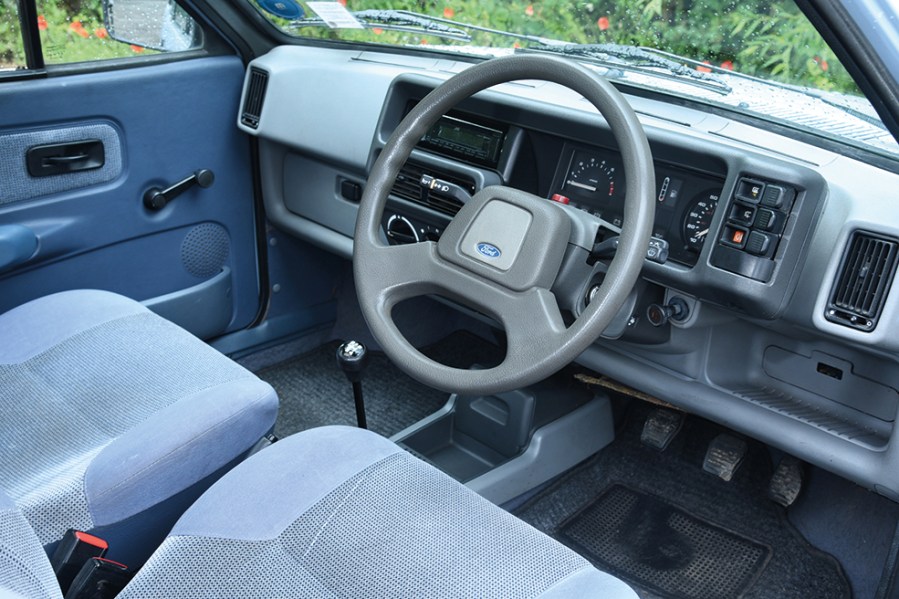
With its spacious interior, comfortable ride and zippy performance it’s easy to understand why the second generation of Fiesta was such a sales juggernaut throughout the 1980s with over 150,000 examples sold in the UK during 1987 alone. Yet it didn’t have the market to itself, so how does it stack up against its deadliest rival?
General Motors’ first real supermini first went on sale in Europe as the Opel Corsa in September 1982, eight months before it did so in the UK when it was badged as a Vauxhall. Just as it does today, the once-British brand had more traction in this country than its German counterpart despite it being part of GM since 1925.
Like the Fiesta, the car was also built in Spain, this time at GM’s huge factory in Figueruelas near Zaragoza to the north-east of the country. Perhaps this led to Vauxhall re-erecting the local-sounding Nova name which had previously been used for a Chevrolet saloon throughout the 1960s,’70s and ’80s. Corsa was also deemed to sound too much like ‘coarser’, though it clearly didn’t bother Vauxhall just over a decade later.
Unlike previous rebadged models which included the Cavalier, Carlton and the Chevette, the Nova received little in the way of design changes to earn itself the Vauxhall name. Put the two variations together and only the famed Griffin badge on the back plastic grille instead of the Opel flash would separate the two.
The first car to use GM’s 4200 platform, the body was the work of Opel’s chief designer and the man behind the GT, Erhard Schnell. It was much more aggressive-looking than its rivals, with its flared arches and crisp, chiselled lines giving it something of a rally car look. Yet it was also relatively aerodynamic, the exceptionally low 0.36 drag coefficient being record-breaking for its class at the time. Following the larger and old-fashioned Chevette, the new, younger-looking hatchback was a breath of fresh air and allowed Vauxhall to compete with stylish new superminis such as the Fiat Uno and Peugeot 205.
Under the skin, though, the suspension was the traditional GM set-up with telescopic struts at the front with trailing arms connected to transverse torsion beam with telescopic shock absorbers at the rear. The only engines initially available were Vauxhall’s familiar 1.0-, 1.2- and 1.3-litre petrol units, the latter coming with a five-speed box that was optional on the others. As Autocar said in May 1983: “In short, the Nova is not a startling package in any way.”
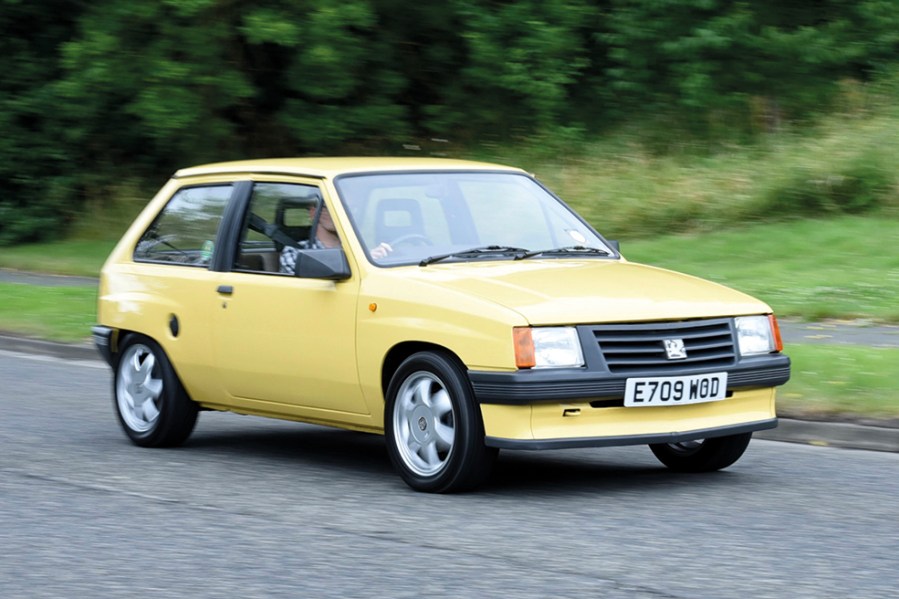
Yet by being good-looking, affordable and, unlike most of its rivals, having the option of a compact saloon and a five-door hatchback that became available from 1984, the Nova became a popular choice in this country and often jockeyed with the Fiesta as Britain’s best-selling supermini. By the time the car was replaced by the Corsa B in 1993, a staggering 3.1 million examples had been produced. Like the Fiesta, they were everywhere during the 1980s, joining British Telecom’s bright yellow vans or Rover Vitesse police cars as the often-unseen backdrop of our towns and villages.
Due to its low value on the used market and mechanical simplicity, the Nova later became the choice of baseball-capped, Max Power-reading performance tuners meaning finding one today that hasn’t been modified is tricky. With its larger alloys, big exhaust and competition-style air filter, this subtly altered Jamaica Yellow 1.2-litre example from 1987 is a case in point. However, the Nova’s handsome and crisp lines are still evident and even if it didn’t have the fat wheels, it would have a more aggressive stance than the softer-looking Fiesta.
As alluded to earlier, all superminis of the time were poorly built by today’s standards. However, the Nova’s interior looks to be more so than the Fiesta’s. Similar in design to those used in other 1980s Vauxhalls, the dashboard feels flimsier than the Ford’s, looking as if it had been designed in the previous decade. There’s still a surprisingly amount of interior room for such a diminutive car, front and rear, but as with the Ford, I wouldn’t want to crash one.
With the 1.2-litre producing 55bhp, it would still feel slightly faster and more responsive than the Ford even if this example hadn’t been fitted with a large and noisy sports exhaust. It’s probably the bigger tyres but the steering feels slightly more positive too, offering more feedback through the skinny wheel. It doesn’t ride as well though, lacking the suppleness of the Ford, but again this is probably due to the wheels.
Indeed, Autocar was more positive when the car was new. “The primary ride of the Nova is good compared with its competitors,” said the magazine in 1983, adding that the suspension “deals with high frequency irregularities very competently.” One thing is for sure; front-wheel drive ensures there’s plenty of grip even in the slight drizzle of this summer’s day that can turn the roads surprisingly greasy.
Just as with the Fiesta, in terms of interior space, economy and performance, the Nova set the standard for future generations of Corsa, which enjoyed even more success. But which of these two early models do we prefer?
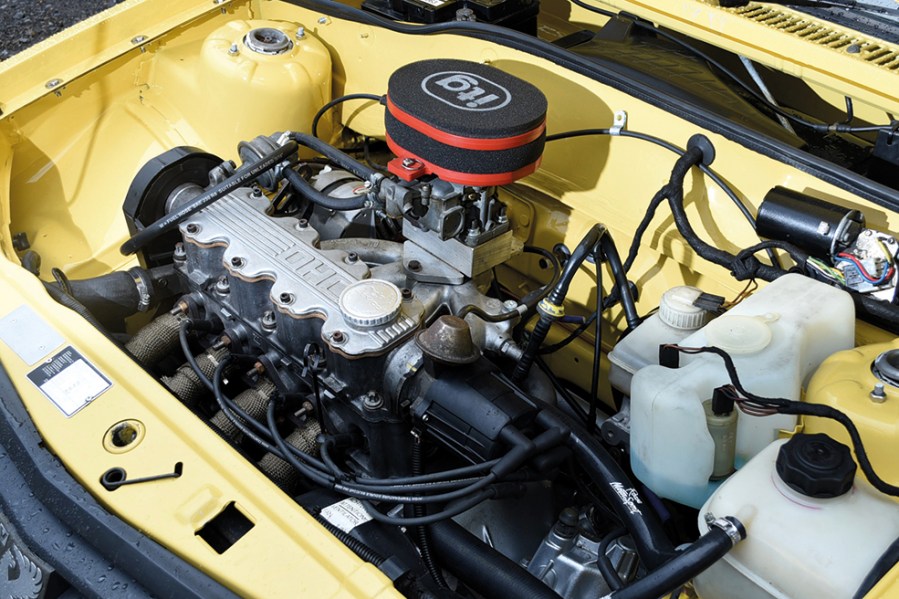
Ford Fiesta Mk2 vs Vauxhall Nova: our verdict
As early exponents of the European supermini segment, both the Nova and Fiesta do the job of being practical hatchbacks superbly and it’s easy to understand their popularity throughout the ’80s. Choosing one when new must have come down to price or simple brand loyalty.
While acknowledging the Vauxhall seen here is a lightly modified example and therefore not a wholly accurate example of the breed, in terms of ride, build quality and overall character, I’d still put the Ford ahead. I couldn’t help but smile as it scrabbled through the busy streets while its comfort, practicality and driveability made it just as usable today as when Frankie was first telling us to relax.
So, while Noel Edmonds might have disappeared from prime time, few people under the age of 30 know what a Rubik’s Cube is and online music streaming has made taping the Top 40 obsolete, if there’s one thing from the 1980s that still top of our chart, it’s the second-generation Ford Fiesta.

